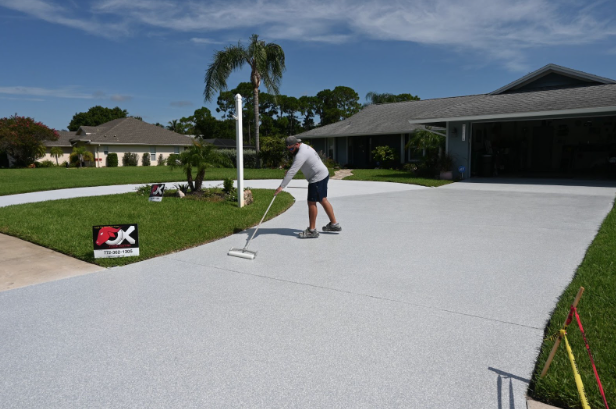
A successful driveway design is essential to enhance your home’s appeal and there is lots to consider, beyond creating enough space for your car, when planning yours. Driveways are one of the first things you and anyone visiting your home will see, so you’ll want to ensure the result is harmonious with your home’s exterior. Think of your driveway as an integral part of your front yard. This advice will help you create a driveway that’s both practical and beautiful.
How can I improve my driveway?
Designing yours from scratch will make a big difference but driveway costs can vary greatly depending on the size of the space you’re working with, the amount of preparation work needed, and the material chosen. We offer a step to step guide for your makeover.
How big should the driveway be?
There are rules and regulations defining the minimum size that a front yard space should be to be able to incorporate a driveway. For a driveway design to work practically, it needs to be a minimum of 10-12 feet (3 meters) wide to allow for an average-sized car, wider if you are parking more cars and turning.
Low maintenance driveway ideas
Easy-to-maintain driveways save valuable time, allowing homeowners to focus on more important tasks than constant upkeep. With minimal maintenance requirements, driveways provide convenience and peace of mind, ensuring that residents can enjoy their homes without the added stress of extensive care. One way to protect your driveway from major damage is to regularly clean spills to prevent them from penetrating the material’s porosity, or to seal it.
Which material is best for a driveway?
Adding a paved driveway is the easiest way to landscape a front yard without plants. However, your driveway materials should echo your home’s exterior and any walls in your front of the house also. Mixing and matching complementary materials will add interest to your driveway design.
Polyaspartic coating
Polyaspartic coating offers several advantages over traditional resin driveways. Firstly, it provides enhanced durability, making it highly resistant to wear and tear from vehicular traffic, harsh weather conditions and it’s also highly resistant to automotive fluids and other substances. This ensures your driveway will maintain its pristine appearance for years, without the need for frequent repairs or replacements.
Although we’d suggest an occasional sweep, the benefit of polyaspartic is that it naturally resists all kinds of mess, from weed growth to moss and slippery algae. It is tough enough to be pressure washed, however, your drive must be installed by an expert to ensure it has the right durability.
Imprinted concrete
Concrete driveways made from imprinted slabs are much lower maintenance than poured concrete. The difference from traditional concrete slabs is that you are less likely to have weeds growing between the paving joints. Pattern imprinted slabs normally only have weeds appear through the joints in the center, but you’ll need to dig them out or use a de-weeding spray periodically. Like many of these low-maintenance driveway ideas, the longevity and appearance of your driveway rely on the skills of your installer. A similar option is to choose crushed concrete, created from raw materials, which is a more eco-conscious alternative.
Gravel driveways
Gravel drives are another option that isn’t normally considered very low maintenance. Weeding gravel can be tedious. Provided you pull plants up as soon as they appear, they should come away easily, as long as the gravel is clear of debris. Another drawback is that it can become uneven and develop potholes over time. It requires regular replenishment of gravel to maintain a smooth surface especially in areas with heavy vehicle traffic.
Designing the driveway
Straight vs curved driveway layouts, length and width, and limiting the parking space are some factors to consider when designing your driveway. Access on foot, softening the driveway’s impact, and lighting the driveway are important aspects to keep in mind. Also when thinking on design you should consider the primary function of the driveway, whether it’s for parking, access, or enhancing curb appeal. Then, assess its location in relation to your home, property boundaries, and surrounding structures, taking into account factors like slope and drainage. Choose suitable materials that align with your budget, climate, and aesthetic preferences, ensuring both durability and visual appeal.
Conclusion
Investing in a well-designed driveway not only enhances the curb appeal of your home but also adds value and functionality. Choosing a low-maintenance option for the flooring, which eliminates moss and weeds ensures easy upkeep and long-term satisfaction. Make your driveway redesign a success with OX floors and transform your home’s exterior with confidence.
